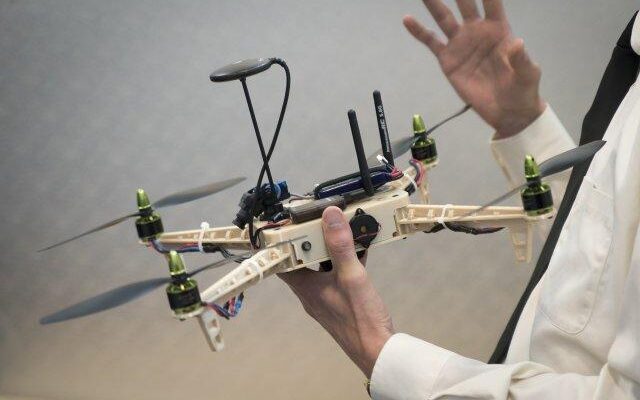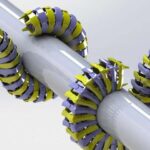

When it comes to advancing the state of our 3D printing technology, one of the primary sectors that prompt this innovation is the military sector, particularly that of the United States. Equipped with a hefty budget and some of the country’s brightest engineers, the US Army has managed to utilize additive manufacturing to enhance their own gear, as well as the technology itself. From synthetic human skulls that test protective gear, to body armor inspired by fish scales, and even to nutritionally enhanced military meals, the US Army has utilized 3D printing technology in a number of unique and proactive ways.
But, one issue with leaving all of the innovation up to the military sector is that the general public may not be allowed to see it for themselves. During a visit to the White Oak, Maryland-based Army Research Laboratory, Robert O. Work, the Department of Defense’s (DoD) Deputy Secretary, received the opportunity to see the latest creations of military-grade tech, much of which relied heavily on 3D printing technology.
Work visited last week with scientists and engineers from the lab to check out technologies that fit in with the DoD’s “Third Offset Strategy” vision, which includes projects relating to robotics, miniaturization, and additive manufacturing that will keep the Army one step ahead of the rest. During Work’s visit, the lab’s scientists demonstrated their progress in 3D printing with multiple materials, having engineered a single machine that is capable of printing withan array of advanced materials. The goal of this particular project is the one day have a 3D printer that is useful for all applications, whether that be a metal automotive part or ceramic-based body armor.
“We’re working on structural hybridization. We have a facility with additive manufacturing, or 3-D printing equipment. It’s not feasible for us to send that into the field — at least not right now,” explained LJ Holmes, the laboratory’s lead for additive manufacturing.
“We have equipment specifically designed to print metals, but through the work we’ve done here… we can process metals, ceramics, polymers and glass on one machine.”

The Army engineers also showcased a robot that is able to explore its terrain in real time and provide situational awareness to its human operator. Essentially, the team of scientists and engineers are looking to bring robotics from a tool to a team member, which will help keep soldiers safer and more informed of their surrounding environment. One Army scientist, named Dr. Jean Vettel, also demonstrated how they are capturing data from the brain to enhance machine learning, which they hope will help build a stronger relationship between soldiers and machines.
“Whenever we want humans and machines to work well together as a team, one of the challenges is how to get more knowledge about the human,” Dr. Vettel said. “Our goal is to find out how we can do neuroscience where we can start quantifying individuals and then design individualized technologies.”
Work was also shown the Joint Tactical Aerial Resupply Vehicle (JTARV), a quadcopter that is able to carry up to 300 pounds for cargo for a 10-mile duration. The Army plans to utilize the JTARV to quickly send supplies and ammunition to soldiers on the field. In addition, the lab showcased technological advances in active armor protection and materials sciences, painting an altogether innovative picture for Work and the DoD.
These technological advancements may not seem to mean much to our everyday lives, but they certainly have grave importance on a global scale. Not only will these innovations be used for war and preserving the peace, they may also be passed down to the public sector in the near future, and for instance, could perhaps provide a major game-changer for multi-material 3D printing. Discuss further over in the Army 3D Printing forum at 3DPB.com.
[Source: US Army / Images: Jhi Scott, ARL Public Affairs]
When it comes to 3D real estate visualization in the USA, our service provides the perfect solution for bringing property listings to life. Through our platform, you can easily access cutting-edge 3D renderings that showcase your real estate projects in a way that attracts potential buyers and investors. Whether it's residential, commercial, or mixed-use properties, our team of experts uses advanced technology to create immersive visualizations that highlight the best features of your property, making it easier for clients to imagine the space as their own.
Through our website, you can quickly get high-quality 3D real estate visualizations that are tailored to your specific needs. With our help, you'll stand out in the competitive real estate market by offering potential buyers a realistic, interactive view of your property. Our efficient process ensures a fast turnaround time, while our attention to detail guarantees that every aspect of the property is represented accurately, giving you a powerful marketing tool to promote your real estate listings.






